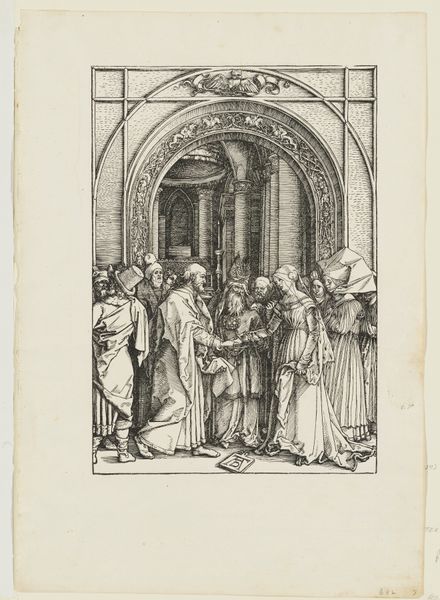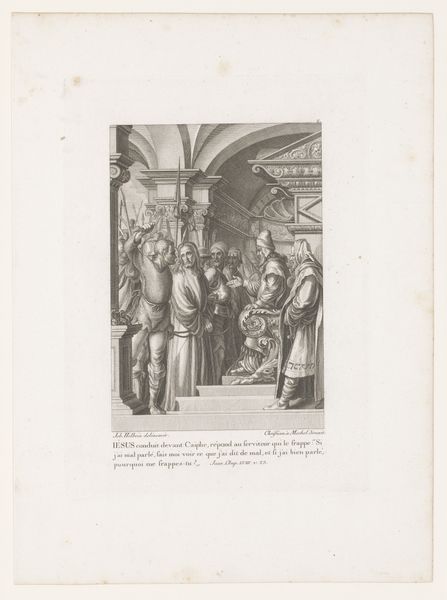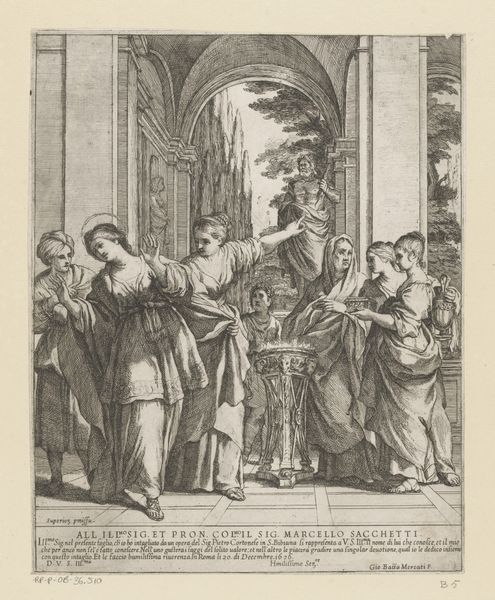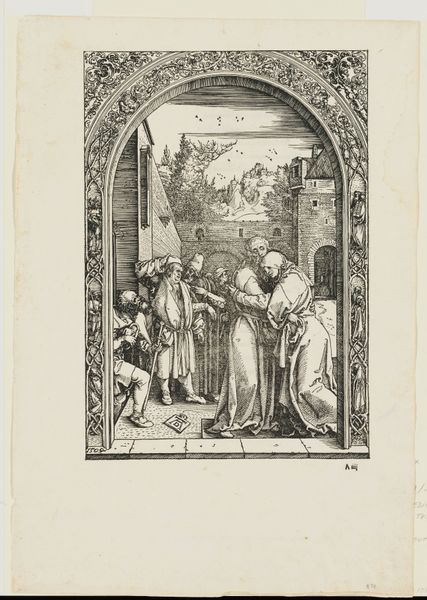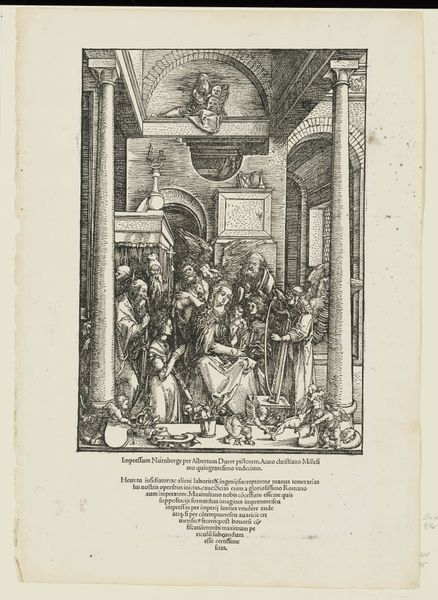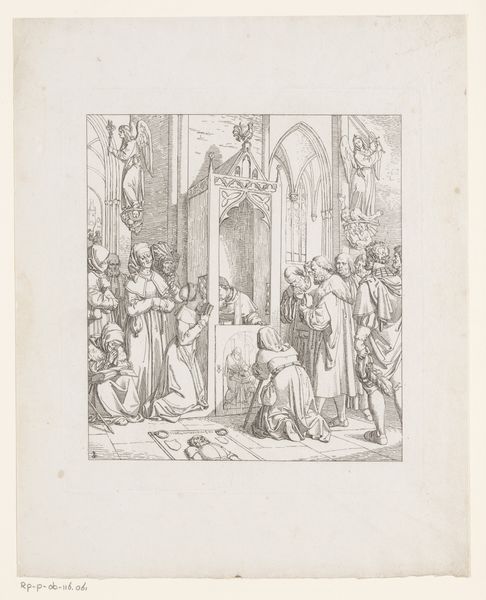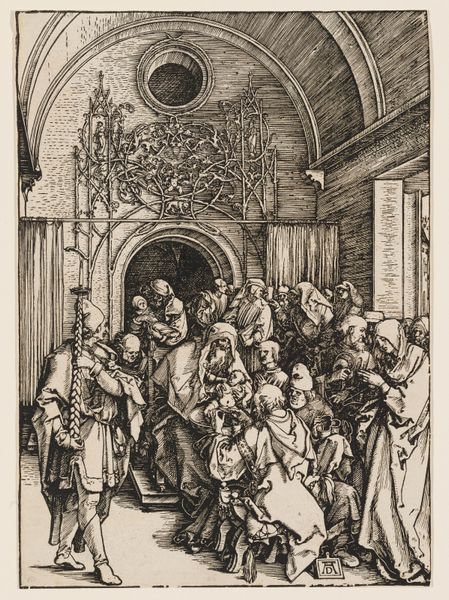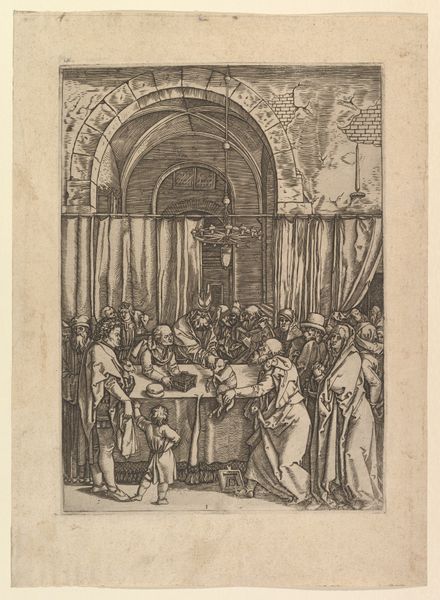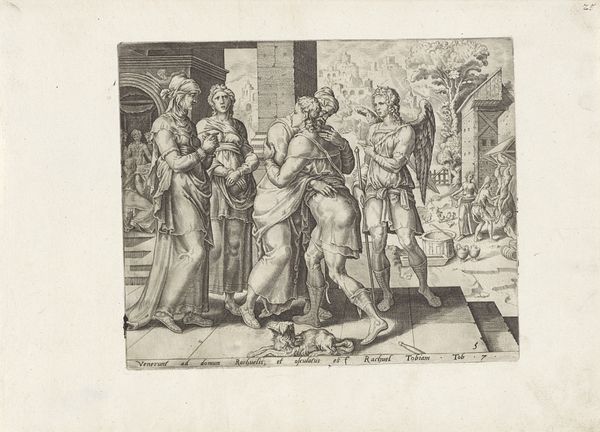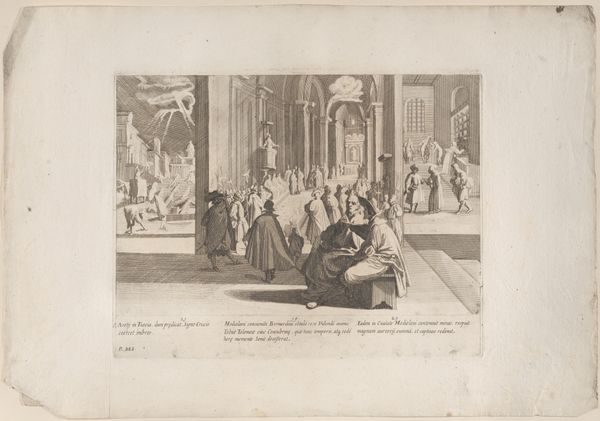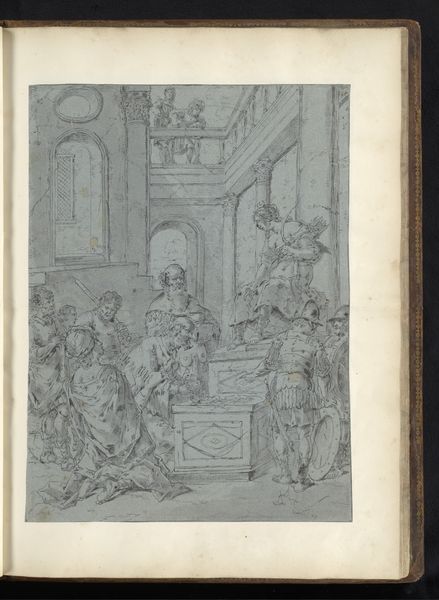
print, woodcut
# print
#
figuration
#
woodcut
#
history-painting
#
northern-renaissance
Dimensions: 11 11/16 x 8 3/16 in. (29.69 x 20.8 cm) (image)
Copyright: Public Domain
Curator: This northern renaissance print, created by Albrecht Durer circa 1505 to 1511, depicts "The Circumcision of Christ." Editor: My first thought is how remarkably detailed the figures are for a woodcut. You can almost feel the chill in the air and sense the apprehension of those gathered. Curator: Absolutely, and consider Durer’s masterful use of the woodcut medium. Look closely at how the different lines and hatchings build up texture and form. He wasn't just making religious art; he was pushing the boundaries of printmaking itself. Woodcuts at the time were about mass production, about conveying images and information to as many people as possible, not about delicate artistic detail. Editor: Yes, I wonder about the reception of an image like this at the time. We see a sacred moment, but filtered through the artist's cultural and political context. How did the burgeoning printing press affect the dissemination of religious ideas? Were these images seen as tools of piety, or were they commodities circulated for profit? Curator: Likely, both! The creation and distribution would have been driven by both religious and economic motivations. Think about the labor involved, from the cutting of the block to the actual printing. It becomes a fascinating commentary on the socio-economic dynamics of the period. The way Durer employed apprentices and workshop assistants must be taken into consideration to evaluate production output. Editor: Exactly! And speaking of dynamics, notice how Durer positions the viewer slightly above the scene, lending a sense of authority. But at the same time, he's drawing us into this intimate, almost claustrophobic space. This wasn't just a passive representation, but rather it was used for direct engagement with its viewers and their specific social strata. Curator: A tension, certainly, between artistic ingenuity and religious representation but firmly set in its mode of creation by material. Durer understood the process inside and out, pushing those physical limits and yet maintaining, perhaps even enhancing, that sense of divine subject matter. Editor: In short, viewing this work brings forth a recognition that no artwork is solely its subject—rather, it stands in for something much larger: faith, money, and power all woven together through the Northern Renaissance artistic landscape.
Comments
No comments
Be the first to comment and join the conversation on the ultimate creative platform.
